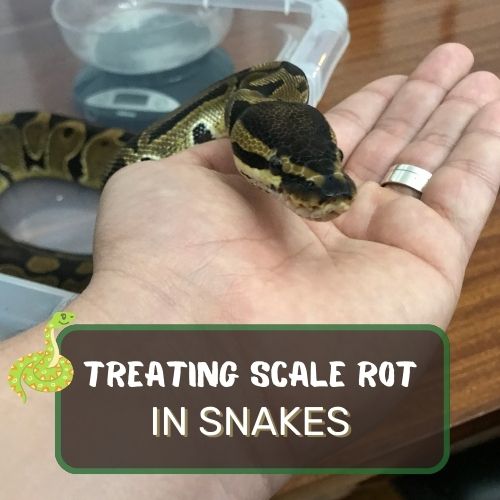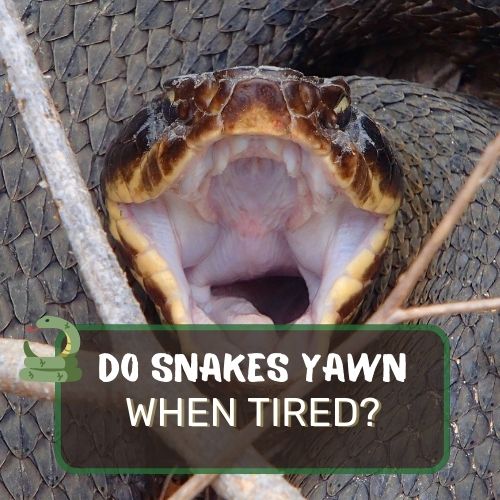
Unlocking the Curious Enigma: Can Snakes Have Seizures?
Prepare to delve into the mesmerizing world of reptilian neurology as we unravel the question: Can snakes have seizures?
Explore the intricate factors that contribute to seizures in these enigmatic creatures and uncover the various triggers that can set off these neurological episodes.
Discover the common symptoms exhibited during snake seizures, ranging from sudden movements and muscle contractions to altered states of consciousness, shedding light on the mysterious behaviors of these captivating reptiles.
Uncover the underlying causes of snake seizures, from genetic predispositions to environmental stressors, and understand how these factors interact to create these fascinating neurological events.
Join us on a journey through scientific research, expert insights, and compassionate care, as we navigate the complex landscape of snake seizures, fostering a deeper understanding of these mesmerizing creatures.
Table of Contents
Can snakes have seizures? (Quick Answer)
Yes, snakes can indeed experience seizures. Similar to humans and other animals, snakes possess complex neurological systems that can sometimes malfunction, leading to abnormal bursts of electrical activity in the brain – the hallmark of a seizure. These seizures can vary in intensity and duration, causing the snake to exhibit sudden and uncontrolled movements, altered behavior, and muscle contractions. Various factors can contribute to snake seizures, including genetic predispositions, brain injuries, infections, and environmental stressors. In some cases, viral infections like Inclusive Body Disease (IBD) have been associated with neurological issues and seizures in snakes.
Proper care, vigilant monitoring, and timely veterinary intervention are crucial in managing and understanding these intriguing occurrences in the reptilian world.
Understanding Snake Seizures

Types of Seizures that Can Affect Snakes
Snake seizures, a phenomenon that might seem straight out of fiction, raise questions about the complexities of these enigmatic creatures. Much like humans, snakes can indeed experience seizures.
Seizures are characterized by abnormal bursts of electrical activity in the brain, leading to a range of physical and behavioral manifestations.
Snakes are susceptible to various types of seizures, including partial seizures that impact specific brain regions, as well as generalized seizures that affect the entire brain.
These seizures can trigger sudden movements, muscle contractions, and altered states of consciousness in these reptiles.
Common Symptoms and Behaviors Exhibited During a Seizure
The subtlety of snake seizures contrasts with their profound implications. Picture a snake abruptly twisting and wriggling, its muscles contracting in an uncontrolled frenzy.
Balance lost, head movements become erratic, and an air of confusion settles in. Occasionally, the snake may experience temporary paralysis during the seizure, only to regain mobility moments later.
Possible Causes and Triggers of Snake Seizures
The realm of snake seizures might be mysterious, yet it’s tethered to reality by its underlying causes. Comparable to human seizures, these episodes can result from various factors.
Genetic predispositions, brain injuries, infections, and environmental stressors can all contribute to a snake’s susceptibility to seizures. Temperature fluctuations, sudden noises, and disturbances in their habitat could also serve as triggers.
Inclusion Body Disease (IBD) and Snake Seizures

IBD and Its Association with Snake Seizures
Inclusive Body Disease (IBD), a complex condition affecting multiple reptile species, including snakes, has captured attention due to its potential connection with snake seizures.
Caused by a retrovirus, IBD has revealed an intricate association with neurological issues in snakes, including seizures.
While not all IBD-afflicted snakes experience seizures, this link raises intriguing questions about the interplay between disease and the reptilian world.
Symptoms and Progression of IBD in Snakes
IBD enters without fanfare, subtly infiltrating a snake’s existence. Early signs might manifest as subtle as regurgitation, weight loss, or shifts in behavior.
Over time, the disease progresses, infiltrating various bodily systems. Digestive troubles, respiratory challenges, and weakened immune responses become intertwined with the snake’s struggle.
How IBD Can Lead to Seizures in Snakes
Amidst IBD’s disruption of a snake’s internal equilibrium, it also interferes with the nervous system. This interference can unravel the snake’s brain function, potentially triggering seizures.
While the precise mechanics that link IBD and seizures continue to be studied, the indisputable impact of this disease on a snake’s overall well-being is apparent.
Genetics, environmental dynamics, and the enigmatic Inclusive Body Disease together illuminate the vulnerability of these creatures to extraordinary events.
As our comprehension of these intricate reptiles deepens, the tapestry of stories in the animal kingdom continues to unravel, exposing an awe-inspiring intricacy waiting to be discovered.
Other Neurological Disorders in Snakes

Some Disorders Causing Seizures in Snakes
Disorders in snakes can manifest as seizures, unusual behaviors, or motor dysfunctions. Several factors can lead to these conditions:
- Infectious Agents: Some viral, bacterial, or parasitic infections can affect the snake’s central nervous system, leading to neurological symptoms.
- Toxins: Ingestion or exposure to certain toxins, whether from contaminated prey or the environment, can induce seizures.
- Trauma: Head injuries can result in neurological damage, manifesting as seizures or other abnormal behaviors.
- Metabolic Disorders: Imbalances in calcium or glucose levels can impact brain function, potentially causing seizures.
- Tumors: Brain tumors, though rare, can lead to neurological symptoms in snakes.
Early diagnosis and appropriate care are crucial for snakes exhibiting signs of neurological disorders.
Viral Infections and Their Impact on Snake Neurological Health
Among the culprits behind snake neurological disorders, viral infections stand out. These microscopic invaders can wreak havoc on a snake’s nervous system, potentially triggering seizures.
Viruses such as the paramyxovirus can infiltrate the snake’s body, leading to a cascade of neurological complications.
The complex interactions between these pathogens and the snake’s nervous system remain subjects of intense research.
Genetic Factors and Their Role in Snake Seizures
Genes, the blueprint of life, can also play a significant role in snake seizures. Just as some genetic conditions make humans more susceptible to seizures, certain genes in snakes can predispose them to these episodes.
The intricate interplay between genetics and environmental factors further adds to the complexity of understanding snake seizures.
Researchers continue to unravel the specific genetic markers that contribute to these neurological events.
Diagnosing Snake Seizures

Methods Used by Veterinarians to Diagnose Seizures in Snakes
Diagnosing snake seizures requires a skilled hand and a keen eye. Veterinarians, armed with specialized knowledge, use a combination of observation, medical history, and diagnostic tools to unravel the mystery behind these episodes.
Diagnosing seizures in snakes requires a multifaceted approach by veterinarians:
- Clinical History: Gathering a detailed history, including the snake’s diet, habitat, recent changes, and any exposure to potential toxins, provides crucial context.
- Physical Examination: A thorough physical check can reveal signs of trauma, infections, or other abnormalities that might be causing neurological symptoms.
- Blood Tests: Analyzing blood samples can detect metabolic disorders, such as imbalances in calcium or glucose, which can induce seizures.
- Radiography: X-rays can help identify tumors, injuries, or other structural issues in the brain or surrounding areas.
- Necropsy: In unfortunate cases where the snake doesn’t survive, a post-mortem examination can offer insights into the cause of seizures.
- Observation: Monitoring the snake’s behavior, especially during and after a seizure episode, can provide valuable diagnostic information.
Early and accurate diagnosis is essential for devising an effective treatment plan and improving the snake’s prognosis.
Importance of Ruling Out Other Possible Causes of Symptoms
Differential diagnosis, a cornerstone of medical practice, is equally crucial in snake medicine. Veterinarians must rule out other potential causes of symptoms that might mimic seizures, such as metabolic imbalances or infections.
This meticulous approach ensures accurate diagnosis and appropriate treatment.
Diagnostic Tests and Procedures Commonly Used in Snake Seizure Cases
Diagnostic tests further lift the veil on snake seizures. Imaging techniques like MRI and CT scans offer insights into the snake’s brain activity, aiding in pinpointing abnormalities.
Blood tests can reveal underlying infections or metabolic irregularities that might contribute to seizures.
These multi-pronged approaches empower veterinarians to piece together the puzzle of snake seizures, guiding them towards effective treatment strategies.
The realm of snake seizures encompasses not only the observable episodes but also a vast landscape of underlying factors.
From genetics to viruses, from seizures to mysterious neurological disorders, snakes hold captivating secrets waiting to be deciphered by the curious minds of scientists and veterinarians alike.
Through careful observation, rigorous research, and a dedication to understanding the enigmatic reptilian nervous system, we inch closer to comprehending the intricacies of these captivating creatures.
Treating Snake Seizures

When it comes to treating snake seizures, the journey involves navigating through a labyrinth of options. While seizures themselves might be enigmatic, the arsenal of treatments available to manage them is expanding.
Veterinarians often tailor their approach to the individual snake’s condition and its underlying causes.
Medications and Therapies Can Manage Seizures in Snakes
Just as with humans, medications take center stage in snake seizure management. Antiepileptic drugs can help regulate abnormal brain activity and reduce the frequency and intensity of seizures.
These medications, carefully prescribed and monitored, can offer significant relief to afflicted snakes. Additionally, therapies like physical rehabilitation and behavioral modification might play a role in alleviating seizure-related issues.
Potential Side Effects and Considerations for Long-Term Treatment
Yet, like all treatments, managing snake seizures comes with its share of considerations. Some antiepileptic medications can lead to side effects, impacting a snake’s overall well-being.
Balancing the benefits with potential drawbacks is a challenge that veterinarians and caretakers must navigate. Moreover, long-term treatment necessitates consistent monitoring to ensure the snake’s health remains a priority.
Preventing Snake Seizures

Measures to Prevent Snake Seizures in Captivity
Prevention is often the most effective strategy, and this rings true for snake seizures. Captive snakes, while safe from many natural threats, can still be susceptible to seizures.
Maintaining a controlled environment with stable temperatures, proper humidity, and appropriate cage furnishings can go a long way in preventing stress-induced seizures.
Proper Husbandry Practices to Promote Snake Health and Reduce Seizure Risk
A holistic approach to snake care can significantly reduce the likelihood of seizures. Providing a well-balanced diet, a suitable enclosure and mental stimulation are crucial factors in maintaining overall snake health.
Ensuring that the snake’s habitat mirrors its natural conditions can minimize stress and mitigate seizure triggers.
Regular Veterinary Check-ups and Monitoring for Early Detection
Regular veterinary visits are the cornerstone of proactive snake care. Veterinarians can identify potential issues before they escalate, enabling early intervention and prevention of seizures.
Routine check-ups, coupled with vigilant monitoring of the snake’s behavior, can lead to timely adjustments in care and preemptive actions against seizures.
The journey through the realm of snake seizures involves not just understanding and managing these episodes but also fostering a proactive approach to their prevention.
With a combination of medical expertise, responsible husbandry, and a dedication to the well-being of these captivating creatures, we can strive to unlock the mysteries surrounding snake seizures, offering them a healthier and happier existence.
Research and Future Directions

Current Scientific Research on Snake Seizures
The quest to understand snake seizures is an ongoing journey that bridges scientific curiosity and reptilian well-being.
Researchers are delving into the intricacies of snake neurology, shedding light on the mechanisms underlying seizures in these captivating creatures.
Cutting-edge techniques, such as advanced imaging and molecular analyses, are revealing new dimensions of these neurological episodes.
Areas of Further Study and Potential Advancements
The horizon of snake seizures brims with uncharted territory. As our comprehension deepens, researchers are uncovering promising avenues for advancement.
Genetic studies could unveil the genes that predispose certain snake species to seizures, potentially leading to more targeted treatments.
Exploring the interplay between environmental stressors and neurological health could provide insights into prevention strategies.
FAQ
Why Is My Snake Twitching So Much?
Twitching in snakes can have multiple causes, including stress, improper environmental conditions, or the presence of parasites. Observing your snake’s behavior and consulting a veterinarian can help identify the root cause.
What Does a Ball Python Seizure Look Like?
A ball python seizure can manifest as rapid, uncontrolled movements, muscle spasms, and loss of coordination. If you suspect your ball python is experiencing seizures, seek veterinary assistance.
Can Snakes Detect Epilepsy?
Snakes don’t possess the capability to detect epilepsy in humans. Their sensory abilities are distinct from those of animals trained to sense medical conditions like seizures.
Can Reptiles Have Seizures?
Yes, reptiles, including snakes, can experience seizures. These abnormal neurological episodes can be triggered by various factors, from genetic predispositions to environmental stressors.
What Animals Can Detect Seizures?
Certain animals, such as dogs, have been trained to detect seizures in humans through behavioral and physiological cues. However, snakes and most other reptiles do not possess this capacity.
The realm of snake seizures remains a mosaic of exploration, encompassing scientific discovery, veterinary care, and compassionate stewardship.
As researchers delve deeper, and caregivers continue to prioritize snake health, we move closer to unveiling the enigmas that weave through the lives of these captivating creatures.
Conclusion
In the intricate world of snakes, the phenomenon of seizures emerges as both an enigma and a subject of deep inquiry.
As we journeyed through the complexities of snake seizures, we uncovered a tapestry of knowledge that intertwines science, care, and curiosity. From the diverse triggers to the range of treatments, snake seizures mirror the intricate dance of life’s mysteries.
Our understanding of these episodes not only enhances snake welfare but also fuels the drive to unravel the secrets of the natural world.
As we move forward, armed with scientific insights, compassionate care, and an unwavering curiosity, we inch closer to demystifying the captivating world of snake seizures, fostering a world where these creatures thrive in health and harmony.




0 Comments